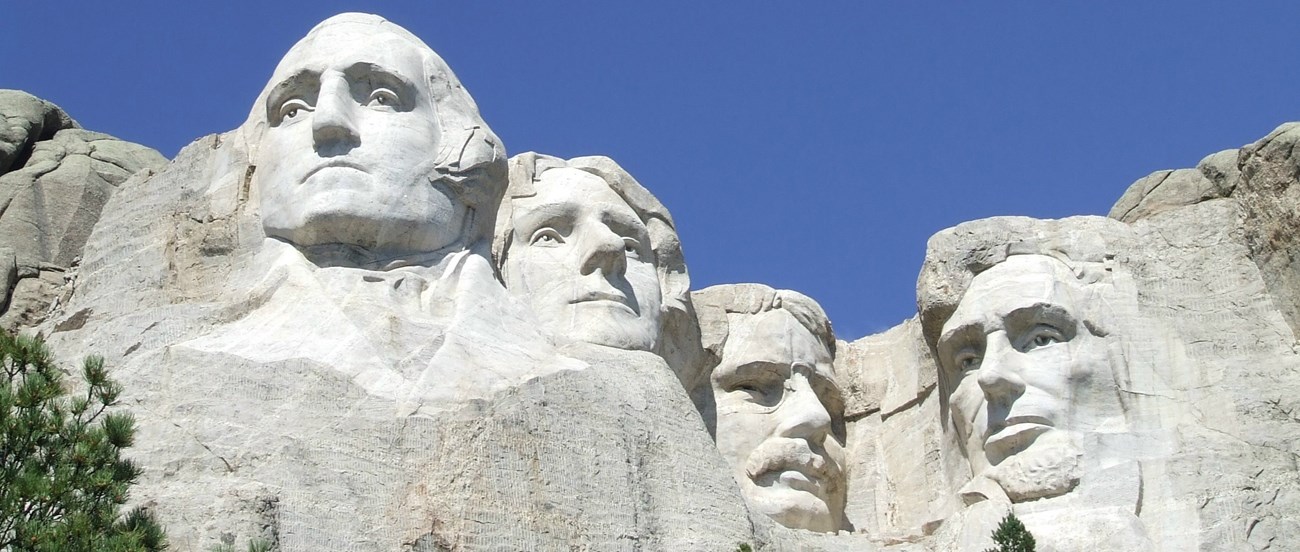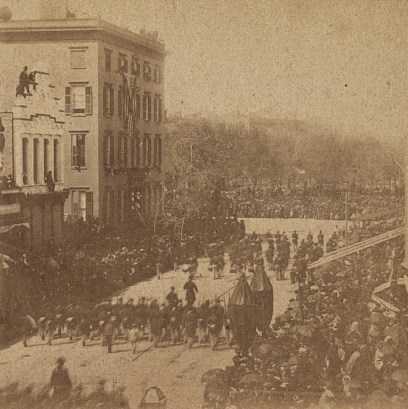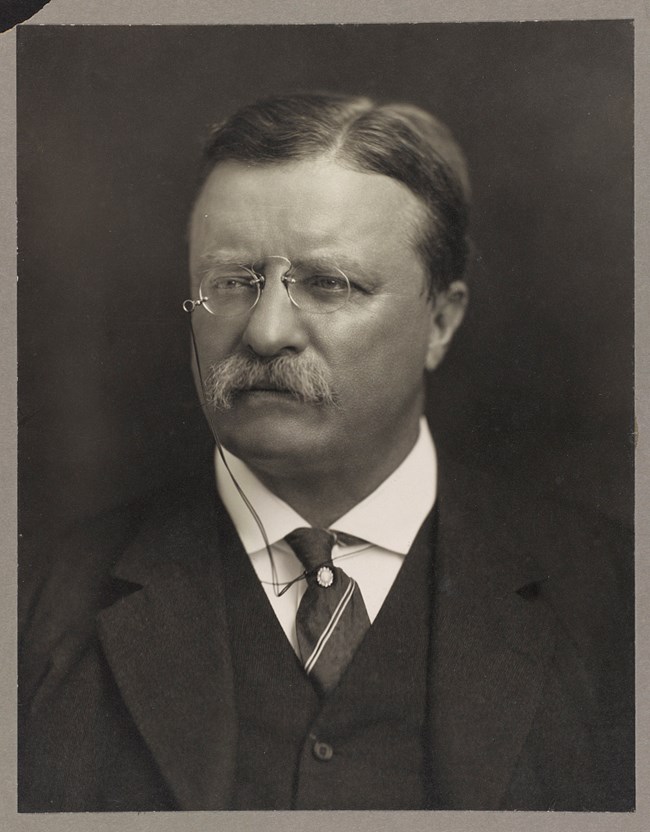
NPS Two of the four faces carved into South Dakota’s Mount Rushmore are the 16th President of the United States: Abraham Lincoln, and the 26th President: Theodore Roosevelt. Though Roosevelt was only two years old when Lincoln was elected President in 1860, he shared many of Lincoln’s same political philosophies. These two men came from different backgrounds, but their lives shared several interesting parallels. Both Lincoln and Roosevelt endured great personal loss, both were familiar with the tragedy of war, and both left lasting impressions on the face of their country. 
Library of Congress Roosevelt and Lincoln's Funeral TrainAfter Abraham Lincoln was assassinated in April 1865, the country mourned his death as his body made its way back to Springfield, Illinois during a 13-day, 1,654-mile train journey through seven states. In several cities, including New York City, public funeral services were held. Roosevelt Assassination AttemptLesser-known than the Lincoln assassination is the attempted assassination of Theodore Roosevelt. While campaigning in Milwaukee, Wisconsin on October 14, 1912, Roosevelt was shot by John Schrank. Roosevelt said to the crowd, “I have just been shot; but it takes more than that to kill a Bull Moose.” The non-fatal bullet, lodged in Roosevelt’s chest, was never removed. 
NPS Roosevelt Honors LincolnTheodore Roosevelt was President of the United States during the 1909 Abraham Lincoln Centennial celebrations. On February 12, 1909, President Roosevelt spoke at the Lincoln Birthplace cornerstone ceremony in Hodgenville, Kentucky. He declared: “As the years roll by, and as all of us, wherever we dwell, grow to feel . . . a peculiar sense of pride in the mightiest of the mighty men . . . the man whose blood was shed for the union of his people and for the freedom of a race, Abraham Lincoln.” 
Library of Congress Roosevelt's North StarTheodore Roosevelt admired Abraham Lincoln as a man and a politician. Shortly after being elected President, Roosevelt ignited racial tension throughout the country by inviting African American author and educator Booker T. Washington to the White House. Roosevelt defended his actions by saying, “If I have erred, I err in company with Abraham Lincoln.” Roosevelt was also known to frequently refer to Lincoln when he addressed the public. Speech at Lincoln Tomb, June 4, 1903“It is a good thing for us, by speech, to pay homage to the memory of Abraham Lincoln, but it is an infinitely better thing for us in our lives to pay homage to his memory in the only way in which that homage can be effectively paid, by seeing to it that this repulic’s life, social and political, civic and industrial, is shaped now in accordance with the ideals which Lincoln preached.” Speech in New York City, February 13, 1905“Lincoln, himself a man of Southern birth, did not hesitate to appeal to the sword when he became satisfied that in no other way could the Union be saved, for high though he put peace he put righteousness still higher. He warred for the Union; he warred to free the slave and when he warred he warred in earnest.” 
Library of Congress Roosevelt and the National ParksAbraham Lincoln and Theodore Roosevelt both have six national parks dedicated to their memory. The Lincoln parks include: Abraham Lincoln Birthplace National Historic Site (Kentucky); Lincoln Boyhood National Memorial (Indiana); Lincoln Home National Historic Site (Illinois); Mount Rushmore National Memorial (South Dakota); Ford’s Theatre National Historic Site (Washington, D.C.); and the Lincoln Memorial (Washington, D.C.). |
Last updated: May 12, 2021
